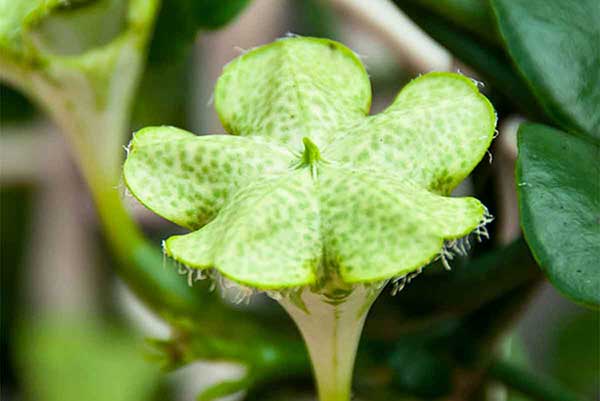
Among nature’s darker yet remarkably successful quirks, there is one that truly astonishes with its cleverness.
It’s well known that certain flies specialize in feeding on bodily secretions from dead or dying bees. Here’s a simple example: a spider catches a bee in its web. The bee desperately struggles to escape, while a fly lands on it to feast on its tasty juices—stealing the spider’s meal.
But that’s not the most impressive part. Or at least, not the only one.
There’s a plant that has perfected the art of deception by mimicking the scent of a dying or distressed bee. Its flowers emit exactly that smell, luring these flies inside. The flies get trapped for about 24 hours with nothing to eat—no pollen or nectar at all. They are released only after they have thoroughly searched every corner of the flower for food or an escape and, in the process, have picked up a sticky “package” of the plant’s pollen (which, if you didn’t know, is contained within the pollen itself).
When the weakened, hungry flies finally leave the flower, they may unwittingly fly to the next “deceptive” flower—only to be trapped again. During this cycle, they deposit the sticky pollen package, fulfilling the plant’s dark and cunning goal of pollination and enabling new flowers to trap more flies in the future.
Nature’s genius at its finest.
The botanical star of this story is Ceropegia sandersonii, also known as the “parachute flower” due to the shape of its blossoms that resemble tiny parachutes.

This climbing plant is native to South Africa and is not alone in using such deceptive tactics. About 4-6% of all plants (roughly 15,000 species) achieve pollination through trickery. One famous example is certain orchids whose flowers mimic female bees, attracting male bees in the process.
Mimicry is just one way flowers deceive insects. They can also use chemical tricks. For instance, the charming orchid Calypso bulbosa, found in the rocky mountains near Denver and Boulder, emits an enticing scent that imitates pollen and nectar to attract bumblebees—yet it offers no real reward. The scent varies widely from flower to flower, making it impossible for the insect to associate a particular smell with deception, drawing them back again and again.
Ceropegia performs its own unique act by combining a complex blend of scents that mimic those of a dying bee, alongside a clever physical trap.
Scientists had known that plants of the genus Ceropegia use deception to attract insects, but they didn’t fully understand how. They also knew the flies pollinating these flowers were kleptoparasitic—meaning they steal food by feeding on secretions from dying or dead insects.
Only female flies of these species (often Desmometopa) are kleptoparasitic—much like female mosquitoes that feed on blood—because they need the protein from these secretions to produce eggs. Scientists hypothesized that these flies are attracted by volatile “alarm pheromones” released by trapped bees, suggesting that Ceropegia mimics these odors.
They suspected that if Ceropegia flowers mimic the “food” scent for Desmometopa flies, the flowers would emit an unusual blend of scents rarely found in other flowers—specifically matching the odors of a dying bee.
Indeed, the most frequent visitors to Ceropegia flowers are Desmometopa kleptoparasitic flies. Experiments found mostly females inside the flowers, supporting the theory that the flowers mimic a scent irresistible to these “ladies.” Remarkably, 60% of the scents emitted by Ceropegia flowers closely resemble those released by European and South African bee subspecies under threat. The flowers even replicate the natural variation in these scents, shifting their aroma significantly.
The chemical cocktail released by Ceropegia flowers is unique—nowhere else in the plant world or insect kingdom does this combination occur, except from the dying bee itself.
